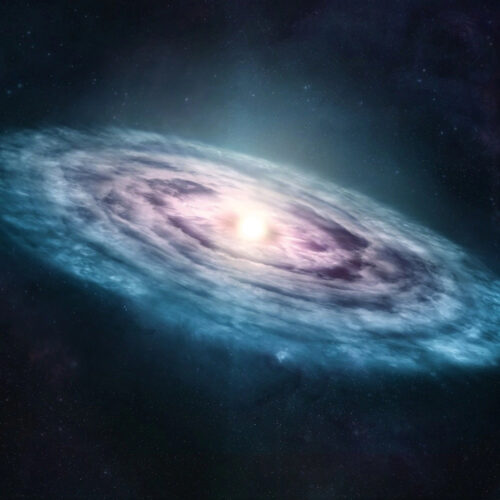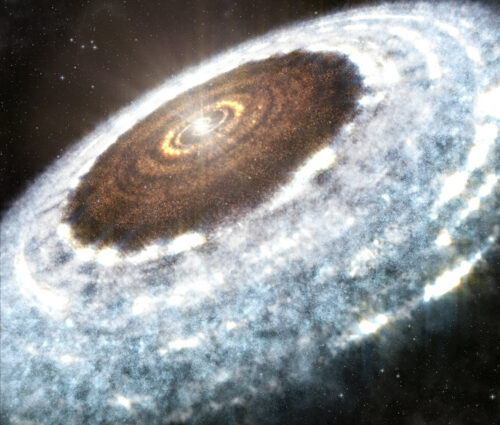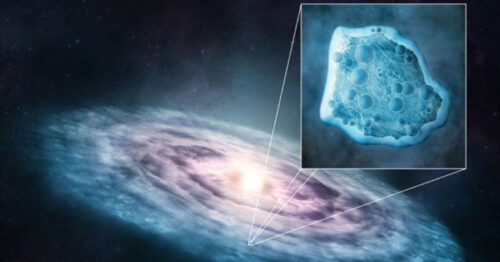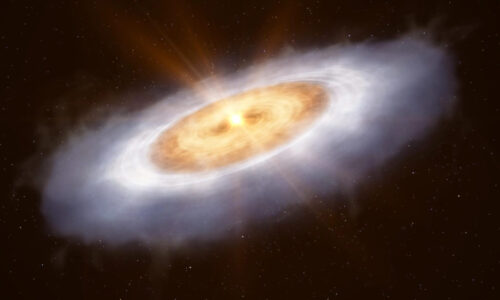
Carbon monoxide (CO) has long been regarded as a crucial element in understanding protoplanetary disks, the birthplaces of planets. However, recent observations have revealed a puzzling discrepancy – a significant portion of carbon monoxide seems to be missing in these disks, defying current predictions of its abundance. In a groundbreaking study led by the Harvard & Smithsonian’s Center for Astrophysics, researchers have discovered that carbon monoxide has been hiding in ice formations within the protoplanetary disks, shedding light on one of the most perplexing mysteries in the field.
Dr. Diana Powell, an esteemed astronomer at the Harvard & Smithsonian’s Center for Astrophysics, emphasizes the magnitude of this enigma, stating, “This may be one of the biggest unsolved problems in planet-forming disks.” Carbon monoxide serves as a crucial tracer of various disk properties, including mass, composition, and temperature. However, current observations indicate that carbon monoxide levels are three to 100 times lower than expected, representing a substantial deviation.
Dr. Powell further explains, “This could mean many of our results for disks have been biased and uncertain because we don’t understand the compound well enough.” The shortage of carbon monoxide has raised doubts about the accuracy of previous studies on protoplanetary disks, highlighting the need for a deeper comprehension of this compound’s behavior within these cosmic structures.
To tackle this intriguing puzzle, Dr. Powell and her team made critical modifications to an astrophysical model commonly used to study clouds on exoplanets. By incorporating these adjustments, the researchers were able to simulate the presence of carbon monoxide hiding within ice formations within the protoplanetary disks. Their findings unveiled a potential explanation for the missing carbon monoxide, suggesting that its presence in ice formations has been overlooked in previous observations.

The team’s research not only offers a plausible solution to the conundrum but also underscores the importance of continually refining and expanding our knowledge of celestial compounds. Dr. Powell states, “Understanding the chemical composition of protoplanetary disks is essential for comprehending the processes that drive planet formation.” By gaining a more comprehensive understanding of the complex interactions within these disks, astronomers can refine their models and enhance the accuracy of their predictions.
The implications of this study extend beyond the realms of astrophysics. Unraveling the mystery of the missing carbon monoxide provides vital insights into the formation of planets, including our own. These findings offer a glimpse into the intricate mechanisms at play during the birth of celestial bodies, deepening our understanding of the cosmic processes that shape the universe.

As astronomers delve deeper into the realms of protoplanetary disks, the quest to comprehend the true nature of carbon monoxide and its role in planet formation continues. This groundbreaking research conducted by the Harvard & Smithsonian’s Center for Astrophysics has paved the way for further investigation, urging scientists worldwide to reassess their models and refine their methodologies.
The enigmatic disappearance of carbon monoxide within protoplanetary disks is slowly being unraveled, thanks to the relentless efforts of researchers at the forefront of astrophysical exploration. As they unlock the secrets of these cosmic nurseries, we inch closer to unraveling the mysteries of our own origins and gaining a deeper appreciation for the intricacies of the universe.

